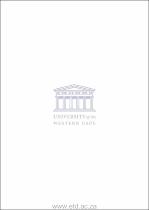| dc.description.abstract | This research has sought to investigate the language policy of Namibian schools against the background of international literature on the advantages of mother tongue as medium of instruction during the initial years of school. The historical background of the formulation and implementation of the current policy is dealt with in Chapter 2. The theoretical aspects of language planning as explained in the
literature will focus on aspects like the underlying principles for language planning. This chapter will furthermore discuss information regarding the status and the use of the mother tongue as medium of instruction in Namibia during the first three years of school. In Chapter 4 a literature review of Cummins's linguistic interdependence principle, as well as the different options or models for a bilingual language approach in education, is discussed in detail and compared to the Namibian situation to find the best possible model which could be adapted for Namibia. Chapter 5 investigates the results of a survey that has been conducted in Namibia to determine the level of English language proficiency of teachers. These findings are compared to find a relation between repetition rates of learners, Grade 10 examination
results per region, as well as the teacher qualifications per region. Chapter 6 proposes a gradual bilingual language model for Namibia. First the rationale will be dealt with, followed by a detailed description of the model and how it is to be implemented. Chapters 7 and 8 deal with the research methodology that was undertaken in the form of a questionnaire and interviews with educationists regarding the use of the real medium of instruction, the perceptions of educationists on the language policy, and their proposals to change the language policy. Their perceptions of the proposed language model are discussed in order to identify ideas on how to streamline it. In Chapter 9 questions concerning the implications of implementing a bilingual language policy with regard to what is possible, practicable, and affordable will be dealt with. The last chapter, Chapter 10, will compare the current language policy, a policy proposed by NIED, and the model proposed here, before a number of recommendations are made. | en_US |

